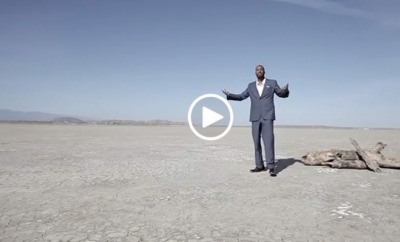Follow These 7 Steps to Learn How to Apologize With Sincerity

The admittance of wrongdoing, the righting of the wrong, the acceptance of the part you played in hurting someone else, and the first step to repentance – learning how to apologize is an incredibly important life skill.
Saying “I’m sorry” is hardwired into us from an early age as the right thing to say. It’s just what you do – the way we make amends, build bridges, and put out fires.
“I’m sorry” doesn’t absolve us of our sins but lays them at our feet giving the recipient the basis on which to start healing.
Actions speak louder than words.
So why does this statement often fall flat? Why does “I’m sorry” often feel like nothing more than a reactive motion? How do we get this so wrong, so often? And what can we do to fix this?
Let us consider that actions speak louder than words. We have heard so many apologies that are not then followed up by action, change, or learned behavior and are now immune to these words.
Holding onto anger is not healthy for us. It doesn’t change anything, and it certainly does not allow us to let go. Realizing this, we must further understand the process to understand the power of an apology!
Apologize too much? Here are 10 Things Women Need to Stop Apologizing For
Follow These 7 Steps to Learn How to Apologize With Sincerity and Clarity:
The most common apology we hear (and give) goes a little like this: “I’m sorry you felt that I treated you that way but it was not my intention for you to take it like that.”
This form of apology is one that is so common. I am sure we can all relate. So, what’s wrong with that? In one word – everything.
Instead, follow these seven steps to apologize sincerely.
1. Accept Responsibility
In an apology, the onus of responsibility and the reason for the apology should be in your actions. The recipient needs to know you are genuine.
Using words like “made you feel that way” or “you to take it that way” shows that, while you are apologizing, you do not accept responsibility for how you made the other person feel.
You are putting the onus of responsibility back onto them – their response becomes the problem, not your actions. Therefore, this sort of apology fall flat in its effectiveness. It can also make the receiving party feel much worse.
The point of an apology is to hold your hands up and accept you are wrong, validating the recipient’s experience and acknowledging their pain. It may just seem like semantics, but it really is the difference between hollow words and a heartfelt apology.
15 Simple Yet Powerful Ways to Improve Your Relationships
2. Avoid the Word “But”
The second mistake in our above example is the use of the word “but.” An apology that has a “but” in it, is automatically a failed apology.
This is not the moment for your feelings to be absolved; it is not the moment for justifications or excuses. An apology is for the other person. Don’t make it about you.
Any apology that has “but” in the middle of it, is no apology at all. It’s not received well, does not have the desired healing effect, and will not end well.
Words Create Your Reality – That’s Why You Need to Cut These 8 Words From Your Vocab ASAP
3. Focus on Your Actions Rather Than the Other Person’s Response
For me, I realized how my own apologies were much more centered around me than the injured party, which goes a long way to explain why I never seemed to feel good giving or receiving them.
This is not uncommon – we use apologies often to justify and pacify our own behavior when, in fact, it should all be about validating the other person.
For me, a good apology must be short and to the point. I want to know that you are sorry for what I am saying you are responsible for – be that my pain, betrayal, my hurt feelings, or anything else.
The basic premise must be that you accept and apologize for your actions, not my reactions.
4. Recognize That You May Not Be Forgiven
Our instinctive belief is that an apology automatically earns us the right to forgiveness. It does not.
You can accept an apology without having to forgive someone; receiving an apology does not necessarily mean you are able or even will be able to forgive.
What it does do, however, is provide a basis for letting go, moving on, and a foundation for forgiveness – should that be a place that you want to go.
It is also important to understand that not everything is forgivable. Accepting an apology doesn’t always mean reconciliation. The best apology in the world can’t restore every connection.
The words “I’m sorry” may be absurdly inadequate even if offered sincerely. Sometimes the foundation of trust on which a relationship was built cannot be repaired. We may never want to see the person who hurt us again. However, we can still accept the apology.
5. Practice Sincerity
When an apology hits the mark, you will feel instantly calmer. While you may still be angry, and still be hurt – it will smooth the edges and initiate the healing process.
An apology made with sincerity and with clear acceptance is an incredibly powerful thing. A real apology is transformative.
You may think that you need to justify your side of the story when apologizing. While you are more than entitled to give your side of the story and provide an explanation to the injured party, that should be a separate conversation – and not a part of your apology.
6. Express Regret
While your intention may not have been to cause them pain, you must recognize that your actions, nevertheless, did hurt this person; acknowledging that regret needs to be the sole purpose of your apology.
Stop Playing the Victim! 5 Signs Your Perspective Is to Blame + How to Flip the Script
7. Follow Up With Action
Following up an apology with action is also critical. While saying “I’m sorry” is as simple as muttering words, to complete this apology you must not repeat that behavior.
While “I’m sorry” will open the doors to letting go and repairing a connection, a repeated apology because of a repeated behavior will certainly only fall on deaf ears.
Learning How to Apologize Is an Incredibly Important Life Skill
The first to apologize is the bravest. The first to forgive is the strongest. The first to forget is the happiest.
When you learn how to apologize with sincerity, your apology includes an offer of reparation or restitution that fits the situation. You don’t overdo the apology or get caught up in who’s to blame or who started it.
A sincere apology requires that you do your best to avoid a repeat performance and it should not serve to be a mode of silence.
A real apology shouldn’t be offered to make you feel better if it risks making the injured party feel worse. And it doesn’t ask the hurt party to do anything – not even to forgive.
Learning how to apologize sincerely and honestly isn’t always easy, but it is a life skill that all mature adults should have – no matter how hard it may be.


This Month's Letter
From the Editor
Monthly motivation and food for
thought from our founder.






























Comments